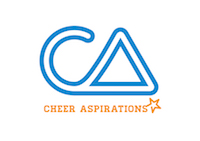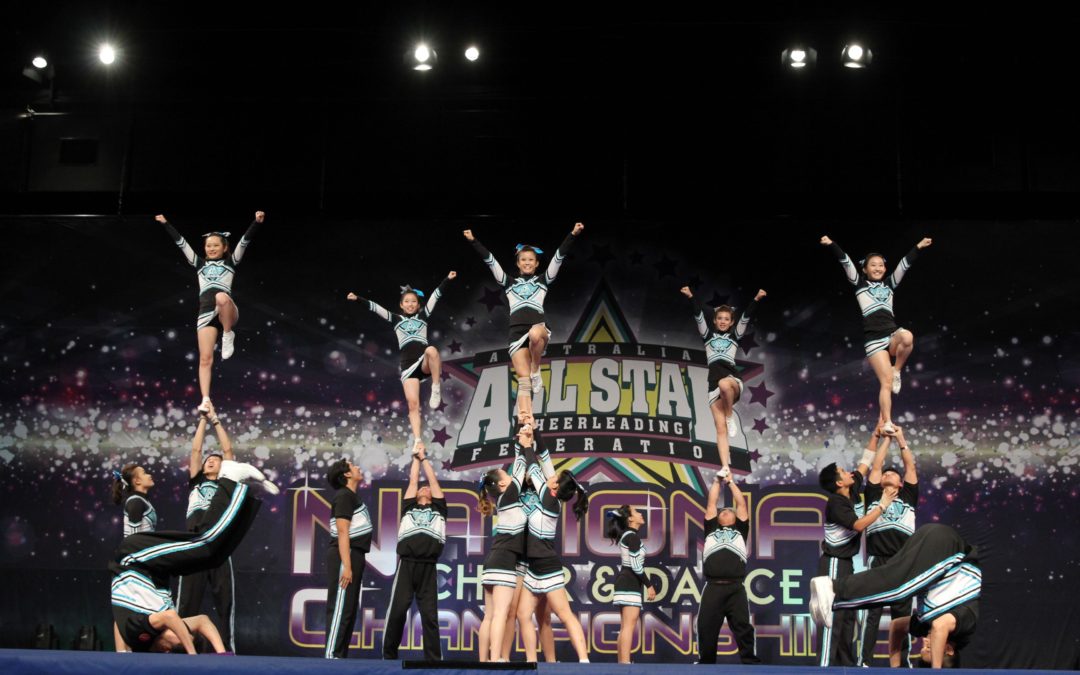Believe it or not, there is no single universal rule for cheerleading competitions! While in general, most sets of rules are similar, there are some minor differences that cheerleaders and coaches need to know about. You may be allowed to perform that cool skill in one competition, but you will be called out for breaking the rule for another!
Before we get into the details of the rules, let’s first understand the background of the rules. ICU stands for International Cheer Union, which governs the ICU World Cheerleading Championships for national cheerleading teams from different countries around the world. IASF stands for International All-Star Federation, which organises The Cheerleading Worlds for All-Star / club based cheerleading teams from all over the world.
Prior to 2019, ICU and IASF rules were almost identical. However, starting from the 2019/2020 cheer season, the IASF has renamed the 6 level system to 7 along with some adjustment of rules. As a rule of thumb, the former level 5 in IASF is now level 6, while level 6 is now known as level 7. So you may ask, what is the new level 5? Well, the new IASF level 5 was formerly known as Level 5 Restricted in ISAF which serves as a stepping stone between levels 4 and 5 previously. This level does not exist in the ICU.
One the other hand, ICU offers Level 0 at the start of the 2018 cheer season. This level caters to young athletes to step into the cheerleading world with a lower difficulty compared to level 1. However, Level 0 is not offered in ISASF.
In our earlier blog post, we wrote about ICU levels 0 – 6 (https://cheeraspirations.com/cheerleading-levels-at-a-glance/). In this blog post, we will talk about the difference between IASF and ICU cheerleading rules! (Note: This article is written based on the IASF and ICU cheer rules for 2019/2020 season)
Level 1:
In the IASF rules, two legged stunts may pass through extension level, which means the flyer may go above the bases’ heads temporarily before settling at prep level or lower. This means IASF teams will not need to worry about their stunts “overshooting” the height limit while performing stunts like preps (elevators). In the ICU rules, taking stunts above the bases’ heads are not allowed.

Two legged stunts are allowed to pass through extended level in IASF Level 1
Source: https://www.youtube.com/watch?v=fLYD6GDm5DY
Level 2:
Similar to level 1, level 2 single leg stunts may pass above extension level in ISAF. This is not allowed in the ICU rules.

Level 2 teams may have liberty stunts pass through extension level in IASF rules
Source: https://www.youtube.com/watch?v=FTqlTbginxM
Level 3:
In ICU Level 3, twisting stunts can be up to 1 twist to prep level only. However, in ISAF Level 3, teams can twist up to 2 legged stunts to extension level. This iconic skill was previously only legal in level 4.
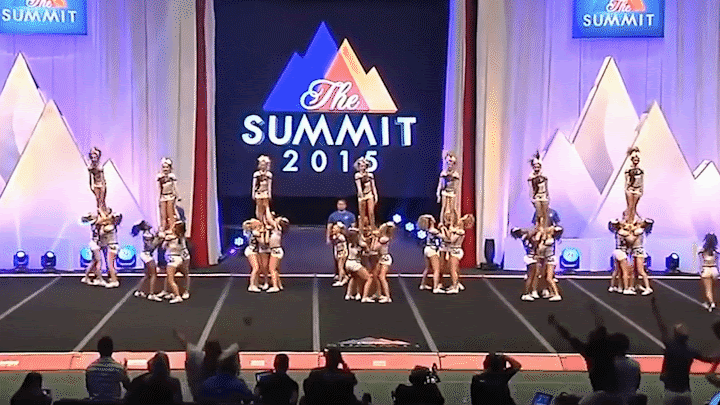
Full twist to extension stunts are allowed in IASF level 3 but only allowed in level 4 in ICU
Source: https://www.youtube.com/watch?v=GHdq3CbgvqA
Suspended rolls are one of the few unique skills allowed from Level 3 onwards. This skill involves the flyers doing a roll mid air with the help of bases bracing the flyers’ arms. Did you know that backward suspended rolls may not twist in ICU? This rule does not exist in the IASF rules.
Downward inversions are allowed in this level but there are slight differences in what skills teams can do. In ICU, teams may perform downward inversions from waist level but cannot pass through prep level. However in IASF, teams may pass through prep level while performing a downward inversion.
Level 4:
IASF Level 4 teams can upgrade their stunt sequence with twisting skills up to 1 ½ twists to extension level! Compared to ICU teams, twisting skills are limited to 1 ½ twists at prep level and 1 twist to extension level. So expect slightly harder stunts performed in IASF competitions.
When it comes to release moves, ICU teams are only allowed to release their flyers from below prep level to be caught at extended level. However, for IASF teams flyers can be released from prep level.
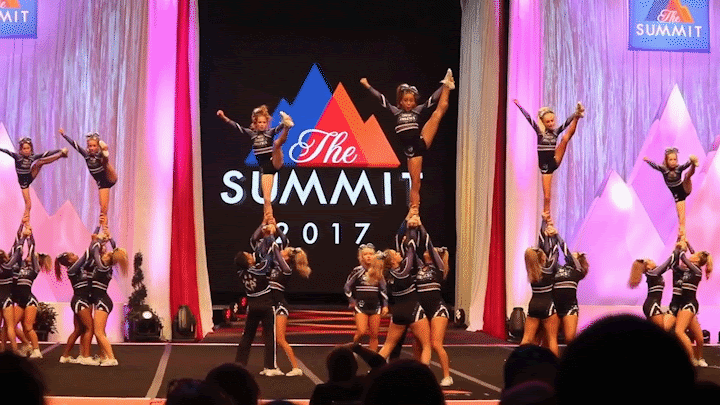
Release moves like a low-high tic toc are allowed in IASF Level 4 but allowed in level 5 ICU
Source: https://www.youtube.com/watch?v=6dVk2_3zIpM
On top of that, downward inversion stunts may start at prep level and pass through extension level under both IASF and ICU rules. However in ICU, teams can only do so when performing the pancake stunt (A downward inversion stunt in which both of the top person’s legs/feet remain in the grip of a base while performing a fold over/pike forward rotation to be caught on the top person’s back.)
Level 5 (ICU) versus Level 5 & 6 (IASF):
This is where the differences become slightly more complicated because they are a lot to list down! Firstly in Level 5 IASF, dismounts are allowed up to 3 tricks. There is no such limitation in both ICU Level 5 and IASF Level 6. This similar limitation is also found in terms of basket tosses. Take note too, although a kick double basket toss is technically considered a 3 trick toss, it is not allowed in IASF level 5 because tosses that exceed 1 twist are not allowed to have extra skills included.
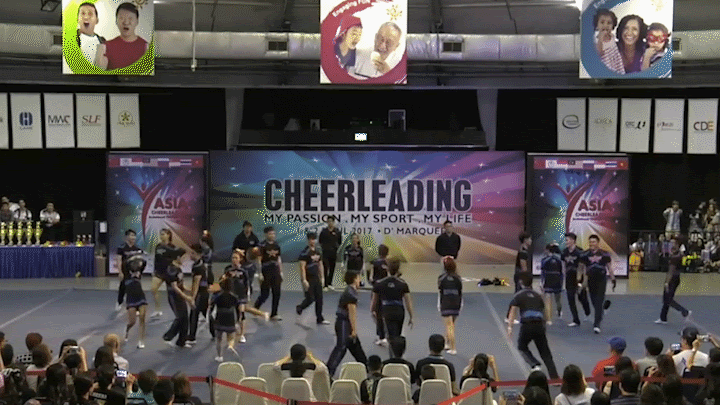
ICU level 5 and IASF level 6 allow kick double basket tosses while IASF level 5 does not
Source: https://www.youtube.com/watch?v=OGtRG7iXSFY
Release inversions that are allowed in Level 5 IASF are non-twisting ones. However, the only legal released inversions that have twisting involved is a front handspring up to a ½ twist in ICU level 5. In IASF Level 6, there are more skills allowed that fall into this category.
One unique feature of Level 6 IASF is the ability to throw rewinds (A backward free-flipping release move from ground level used as an entrance skill into a stunt) in the routine. This skill was only allowed in ICU Level 6 previously.
The pyramids that are allowed in ICU and IASF are similar, the only difference is the braced released inversions. In IASF Level 5, these released inversions are not allowed to twist, but they are allowed in Level 5 ICU and IASF level 6. For example, a braced front full (flyer is rotating a full twist while doing a front flip) is allowed in ICU 5 and IASF level 6, but not in level 5 IASF.
Level 6 (ICU) versus Level 7 (IASF):
It is best to compare the highest levels of both rule books as they share the most similarities! Firstly, ICU Level 6 tumbling is limited to skills with 1 flip and 1 twist, while Level 7 tumbling is limited to 1 flip and 2 twists.
The exhilarating free flipping stunts that are only reserved for the elite levels have some minor differences of what type of free flips that are allowed. In ICU, free flips are only allowed when it is initiated from the ground. On the other hand, ISAF allows free flipping while the flyer is already on prep level stunts!
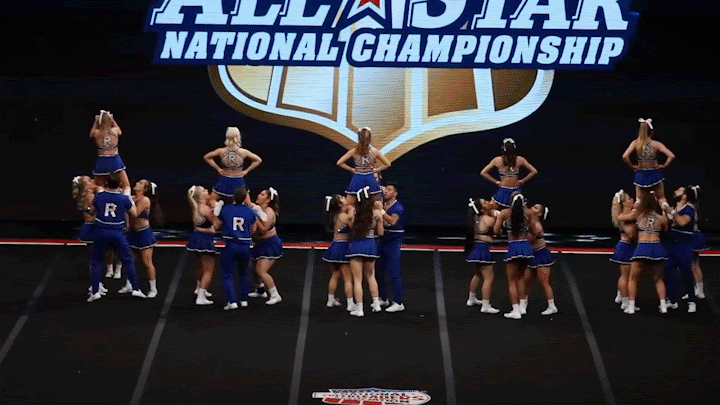
Free flipping stunts during a stunt sequence is allowed in IASF Level 7 but not in ICU Level 6
Source: https://www.youtube.com/watch?v=EW8HhF3se08
Reminder!
So the next time you see some out-of-the-ordinary skills on Youtube or Instagram, be sure to check with your coach whether it is allowed to be incorporated into your next cheer routine! It may seem legal because it’s a competition video but remember that different competitions use different sets of rules!
References:
https://cheerunion.org.ismmedia.com/ISM3/std-content/repos/Top/docs/ICU_TeamCheer_Rules_2018.pdf
http://www.iasfworlds.com/wp-content/uploads/2020/04/IASF-2020-21-Rules-FInal-4_23_20.pdf
